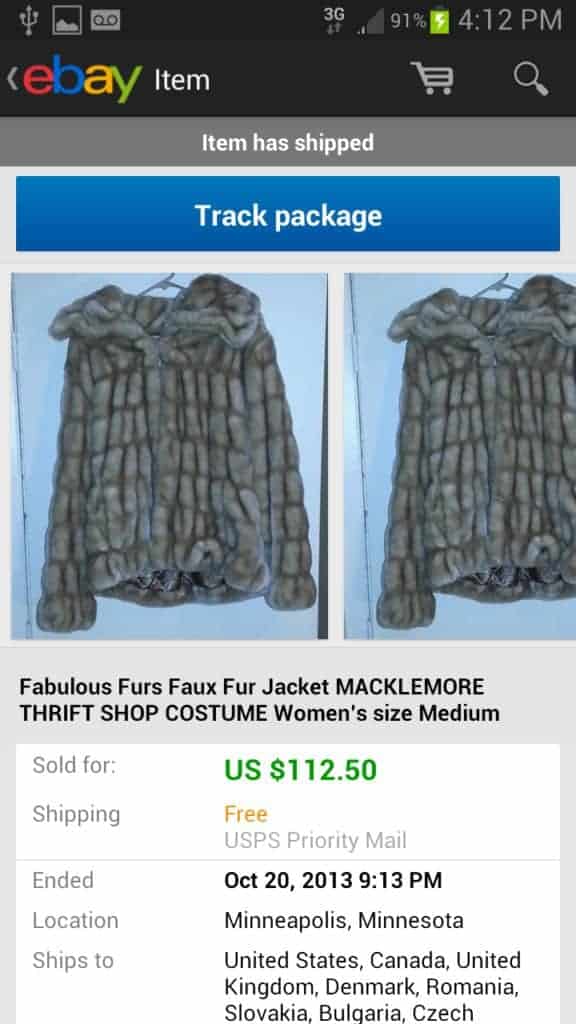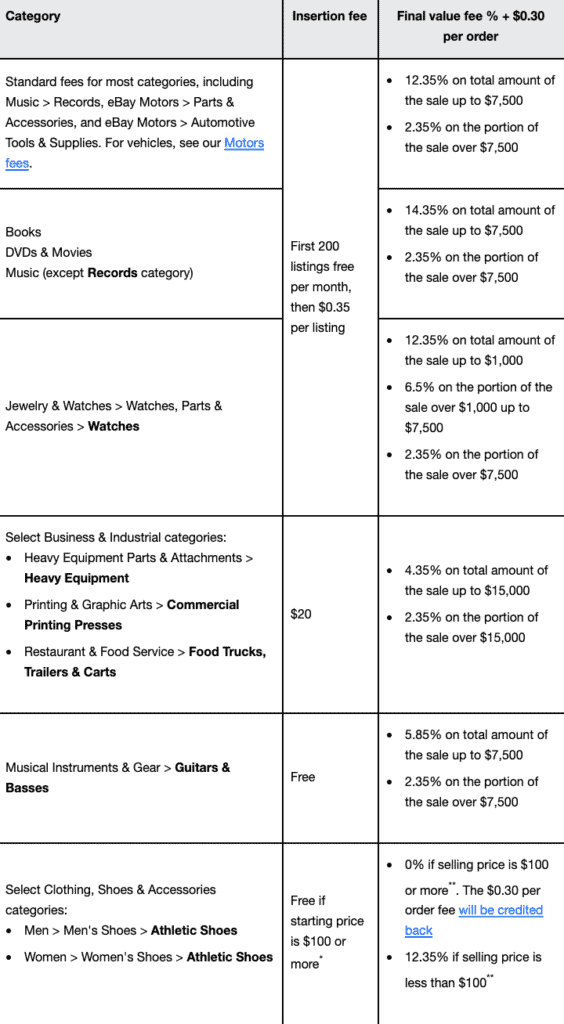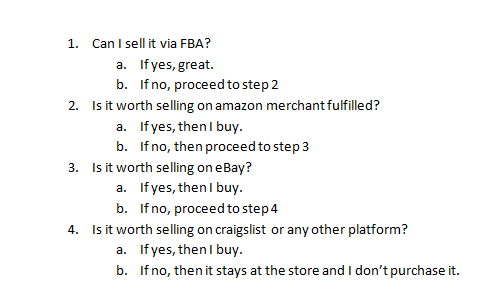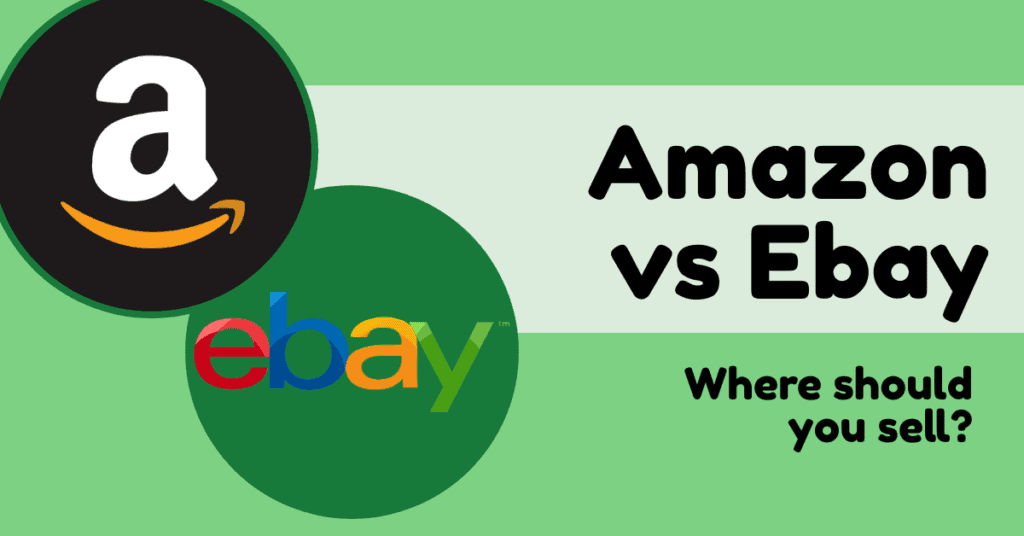Is it better to sell on Amazon or eBay?
In our experience, it’s better to sell on both! The “best” place to sell depends on the item you are trying to sell. We sell several million dollars worth of products online each year, and certain types of items we prefer to sell on Amazon and others we’ll put on eBay.
The most important differences between selling on Amazon and selling on eBay are:
- How listings work on each platform
- Buyer (and platform) expectations
- Fees
- Fulfillment options
How Listings Work On Each Platform
Amazon and eBay handle product pages and listings very differently, and this has a huge influence on everything else we’re going to talk about.
Selling An Item on eBay
When you sell on eBay, every item you list will have a product page that you control.
You control the title, the description, the product details, the listing “style”, the pricing, the shipping, how you want it to sell, and everything else about the listing.
This is true whether you are selling a mass-produced consumer good or something you hand made.
You can list more than 1 “unit” of each item if you have more than 1 to sell, but the listing belongs to you.
So when you search for an item on eBay, you’ll frequently see tons of listings for the same product.
For example, here are the results for the search “Rawlings Official 2019 All Star Game Baseball” on eBay. Even though this is a very specific product, there are 29 total search results and many of these are for the exact same ball.
When you open up one of these listings, you’ll see that the listing is “owned” by one seller.
In this example, the first result for the search led to a listing by a business named “usasportsmktg” that has sold 335 of these baseballs.
So when selling on eBay, one of the big challenges as a new seller is competing with other sellers to be at the top of the search results.
On eBay, you also have more options regarding the format or style of the listing. eBay became famous thanks to the auction format, but you can also choose to list your items as “Buy It Now”.
There is also an option to “Accept Offers”, which essentially means you are willing to digitally haggle. For certain products, being willing to haggle can be a great way to get a sale faster than you would otherwise. By pricing the item slightly higher to begin with, this feature can also give buyers the excitement of getting a good deal while you still get a price in the range you were targeting.
Selling An Item On Amazon
As mentioned before, selling on Amazon is very different.
When you perform a search for a product on Amazon, identical products show up in a single listing even if the sellers are different.
So when you search for “Rawlings Official 2019 All Star Game Baseball” on Amazon, only one of the results is for that ball. The rest are for different variations and years.
When you open a listing, you’ll see that there are multiple sellers offering inventory.
In this case, there are 4 sellers, but for more popular products there can be many more than this.
For example, the Settlers of Catan board game has 55 sellers currently offering it for sale!
If you are selling an existing product that you didn’t invent or brand yourself, this means you’ll have to compete to earn the buy box if you want to get sales.
You can learn more about how to sell on Amazon here.
Buyer (and Platform) Expectations
The vast majority of products can be sold on either Amazon or eBay, regardless of condition.
But in our experience, each platform specializes and encourages a different type of product and buyer.
We’ve found that people generally turn to Amazon more often when they are looking for brand new items in original, undamaged packaging. More often than not, they want the exact same product they could buy if they walked into a Big Box store (or a comparable product of a different brand).
eBay has the edge when it comes to used, vintage, or rare items. New items that are missing the original packaging, have damaged packaging, or that have cosmetic blemishes also perform better on eBay. Deal hunters are also more likely to turn to eBay.
One of our favorite all-time eBay sales was when we sold this fur jacket as a Macklemore Thrift Shop costume and made over $75 profit.

Read more about what to sell on eBay here.
The differences in how listings work on each platform play directly into all this. eBay is designed to let sellers easily identify anything unique about what they are selling.
Note that there are many other platforms out there as well, like Etsy, Poshmark, Mercari, Craigslist, and others. For the purposes of this post, we’re just talking about Amazon and eBay.
Fees
How much it will cost to sell your item is an important factor to consider. Below you’ll find an overview of the fees you’ll pay on each platform.
Fees on eBay
The main fees you’ll pay on eBay are an “Insertion Fee” and a “Final Value Fee”.
Here is a screenshot of eBay’s fee chart for both Insertion Fees and Final Value Fees:

The chart listed above is for sellers using eBay’s managed payments. This is their new payment system that allows more payment options at checkout. It will be the only option in the near future. If you are currently not using this, you can read more about fees for non-managed payment sellers here.
Fees on Amazon
The fee structure on Amazon is slightly more complicated.
The main fees you’ll encounter are the referral fee (typically 6-15%), the $0.99 per item fee for Individual sellers, the $39.99 monthly fee for Professional sellers, and the “FBA fees” if you opt for Fulfillment by Amazon.
Here is a breakdown of the different Amazon Seller account options.
Here is a complete breakdown of Amazon Seller fees.
Does it cost less to sell on eBay or Amazon?
The fees are in the same general range on both Amazon and eBay with some variances by category. My recommendation is to check the fees on both marketplaces for the items you plan on selling.
Another important factor in this is how you will be fulfilling the item. Fulfillment by Amazon (FBA) fees will add a a considerable amount of the final cost of selling on Amazon, but this also will save you a lot of time in processing orders. When selling new items on Amazon, we’ve almost always found the FBA fees to be worth it.
We recommend answering this question on your own on an item by item basis.
Fulfillment Options
As we mentioned above, one of our favorite features of selling on Amazon is the access to their fulfillment services.

While FBA carries additional fees, we’ve found that the total amount we’re able to sell when using this service is far greater than when we try to process everything on our own. Many times the fulfillment costs we pay through FBA are actually less than if we shipped the item directly from our location to the customer.
We’ve found the items we sell using FBA also sell faster. Buyers like the guaranteed fast shipping, especially Prime members.
For these reasons, we sell nearly 100% of our brand new items using FBA. The main exception to this is during the holidays when fulfilling our own orders allows us to get things delivered in time for Christmas when using FBA would cause a delay due to inbound shipping and processing times.
eBay does not have any fulfillment service like this, although third party solutions exist for both Amazon and eBay.
Should you sell on Amazon or eBay?
Like we said at the beginning of this post, we sell on both Amazon and eBay. Our recommendation for the majority of people who are following our Stairway to 7 Figures strategy is to do the same.
There is profit to be made on each platform, and we’re not in the business of turning down opportunities when we find them.
Here is the basic thought process I go through for each item:

For all the reasons we went over above, we sell the vast majority of our new-in-box products sourced via retail arbitrage or wholesale on Amazon using FBA.
eBay fills a smaller but still important role in our business. This is were we sell anything used, rare, or with damaged packaging. We frequently sell our Amazon returns on eBay as well.
One thing to keep in mind is that this decision starts before we’ve even acquired the product. You shouldn’t buy anything until you’ve determined whether you can sell it profitably, and a big part of this is figuring out how well an item sells on each platform and what you expect to pay in fees.
Should beginners sell on eBay or Amazon?
A common follow up to the above question is whether our advice changes for beginners.
We recommend leveraging both platforms from the beginning. While many new sellers find that they get sales faster from eBay when they first get started, it’s important to get things listed on Amazon so you can build up your account history and start earning the buy box.
Comments, Questions, and Additional Reading
If you have any comments or questions about anything we’ve discussed here, please share them in the comments below!
For additional reading, we recommend:

